Despite her claims otherwise, Amy Cooper knew exactly what she was doing when she called 911 to make a false report that Chris Cooper was threatening her in New York City’s Central Park.
“I’m going to tell them there’s an African American man threatening my life,” she sneers, pulling down her face mask and dragging her dog by its collar. “Please call the cops,” Chris Cooper calmly responds.
Whether Amy Cooper acknowledges it or not, growing up as a white person in the U.S., she has been saturated with toxic messages of the supremacy of whiteness since birth. We all have. She leveraged her whiteness to weaponize the police against Chris Cooper, an avid birdwatcher, a Black man who had asked her to leash her dog in an area where it was illegal to have one’s dog off-leash. She knew—she intuited—that a white woman calling the cops to lie about a Black man threatening her would bring a swift, unquestioning response in her favor. She knew that by saying, “I’m going to tell them there’s an African-American man threatening my life,” she was in fact making a threat against Chris Cooper’s life.
Police have a long and horrifying record of using deadly force against Black people. On the same day that Amy Cooper was lying to 911, Minneapolis police officer Derek Chauvin (who had 12 prior complaints against him in a 19-year career on the force with zero disciplinary action) was murdering 46-year old George Floyd by kneeling on his neck as he gasped for air on the concrete, pleading, “I can’t breathe.” George Floyd was described by friends and family as a “gentle giant” who worked security for a bistro, and was “loved by all employees and customers.” He had moved from Houston to Minneapolis to “be his best self,” one friend said.
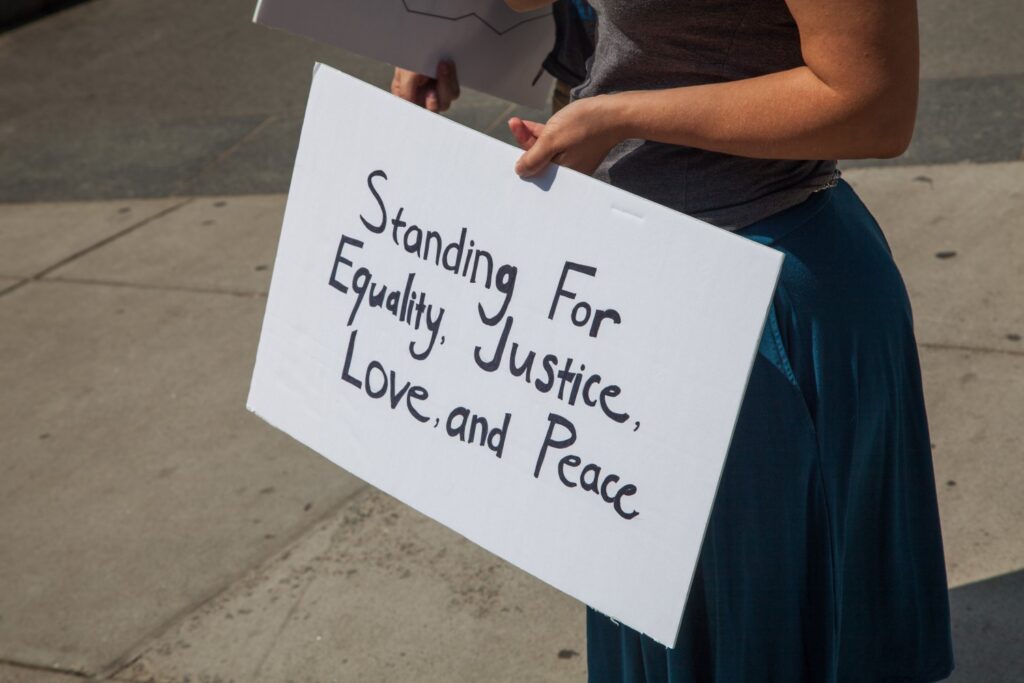
It’s easy for us as white folks to vilify the Amy Coopers of the world—entitled white women who police and report the activities of innocent Black people—thereby endangering their lives. Going all the way back to the murder of Emmett Till and way before that, false reports by white women have resulted in Black people being murdered.
And yes, Amy Cooper’s actions are certainly worthy of critique. But by saying to ourselves and others, “I’m not like her,” we miss the chance to examine our own internalized white supremacy and how it operates in our minds, families, offices, and communities (see illustration below).
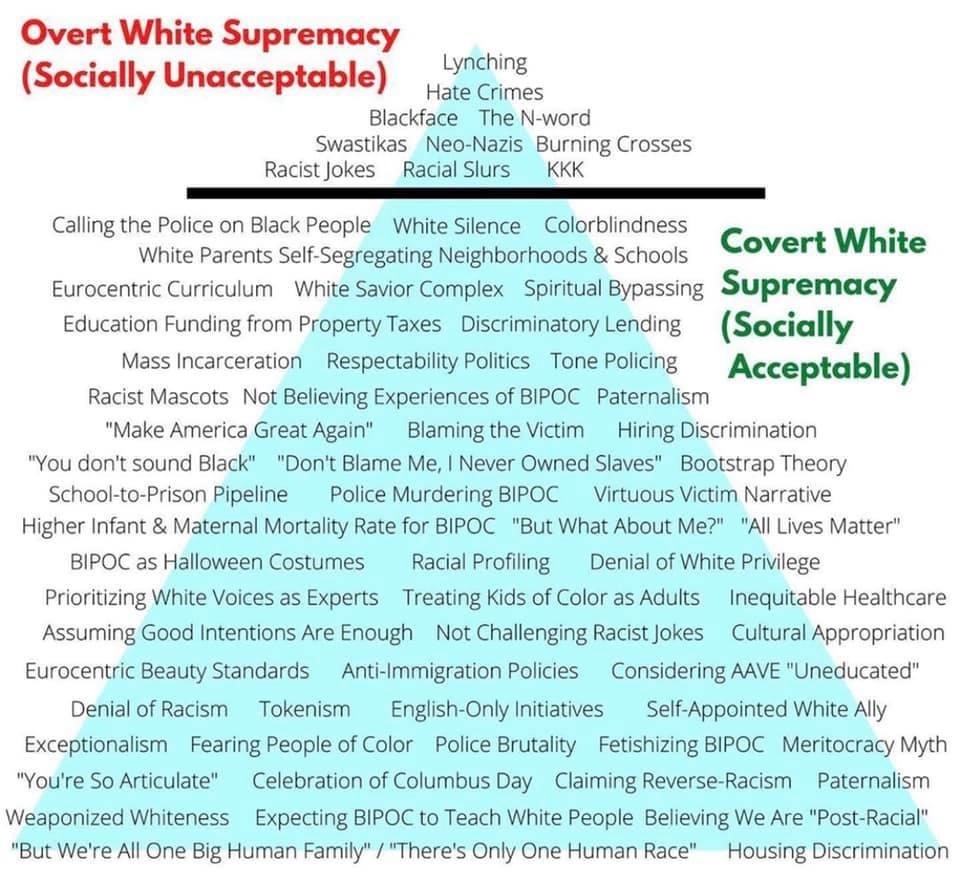
If we want to be allies to our Black colleagues, family, friends, neighbors, and clients, it’s critical for us white people to understand that—like all oppressions—racist behaviors exist on a continuum. The actions of Amy Cooper and Derek Chauvin exist on that continuum; there is a direct line from Amy Cooper’s weaponizing race for summoning the police to police officer Derek Chauvin using lethal force against a man who was posing no physical threat.
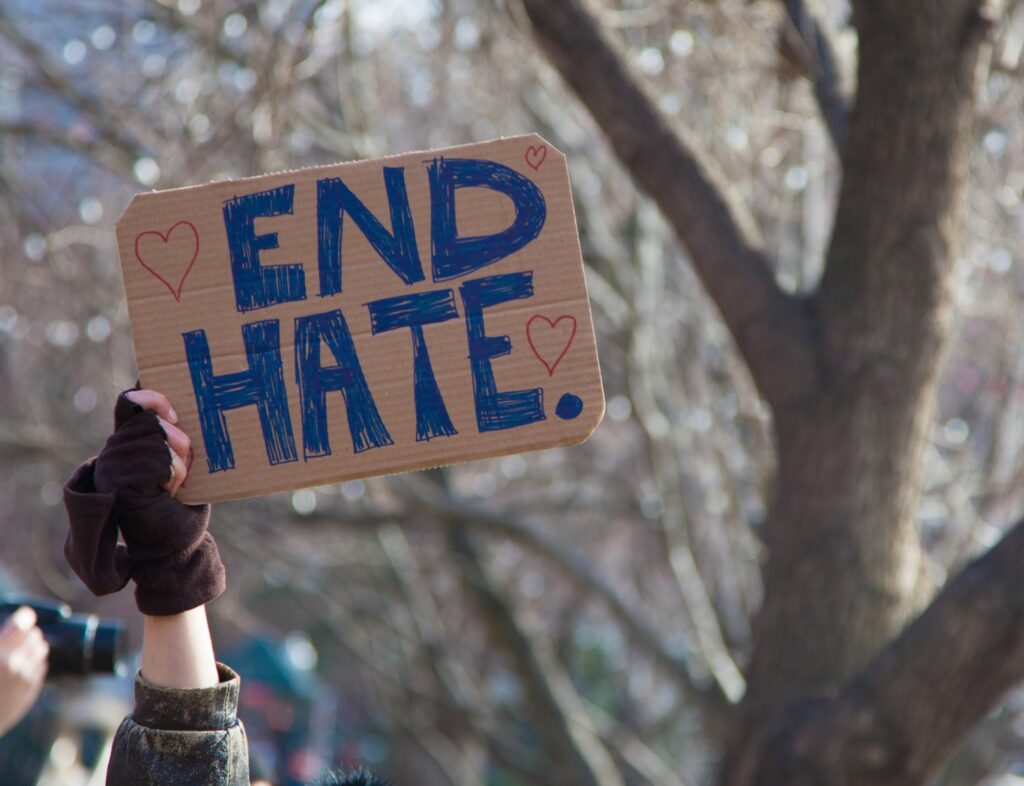
Similarly, there is a direct line from microaggressions we may inflict on Black people to Amy Cooper knowing that she could lie to police with impunity and quite possibly endanger an innocent man’s life in the process. All of these behaviors support the omnipresent and toxic falsehood in our culture that Black people are “less than”.
Racist actions on this continuum have different impacts, yet all are harmful to the psyche and bodies of our fellow human beings. From microaggressions to murder, racist actions prop up the structural inequalities (the written and unwritten policies and practices) that ensure white people—on the whole—have access to more chances, more resources, greater safety, and more justice than anyone who is not considered “white.”
So, what to do, dear fellow white people? Paralysis and guilt may be understandable reactions to the onslaught of news about the excessive toll taken on Black bodies-whether it’s by police brutality or COVID-19, where the mortality rate for Black Americans is almost two and half time higher than for whites. But paralysis and guilt do nothing to save lives.
There is no dearth of information on how white people can help make change happen. Here is a list of 75 actions that white people can do to help support racial justice. Here is a list of anti-racism resources, including podcasts, reading and video lists, and other resources for white folks to learn more about racist oppression and the beauty of Blackness without putting the burden of our education on Black people (after all, it is not the responsibility of Black people to educate us on racism).
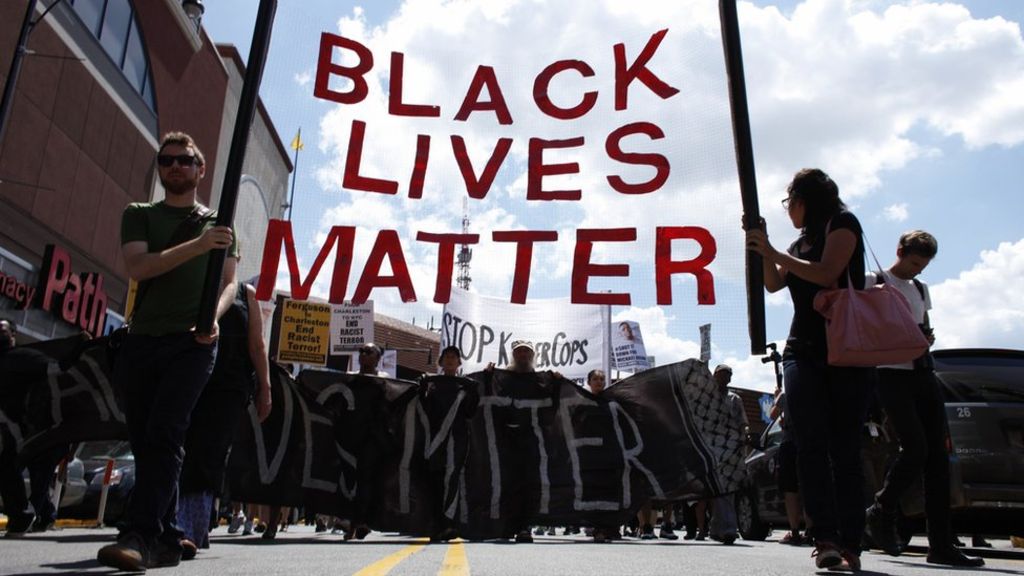
Do what you can where you are. Talk to your kids and family about white supremacy and racism, how to spot them, and how to talk with their own friends about them. Contribute time and money to organizations led by people of color that work toward liberation, like Southerners on New Ground and Black Lives Matter. Give to the Legal Aid Justice Center and the New Virginia Majority, two organizations in Virginia that fight for racial justice and democracy.
If you are an advocate for survivors of violence, commit to your own education about how racism impacts survivors of color*, learn how to engage in systems advocacy in your own community by following the lead of organizations that have people of color at the helm*, and talk with schools in your community about simple steps you can take to dismantle the trauma-to-prison pipeline*.
Working for gender justice and a world without gendered violence means that we must simultaneously work toward racial justice and a world without racist violence. If you’d like to learn more about how the work to create gender justice intersects with work to end other oppressions, download these Action Alliance infographics here: “How Justice Movements Connect” and “How Oppressive Systems Connect”.
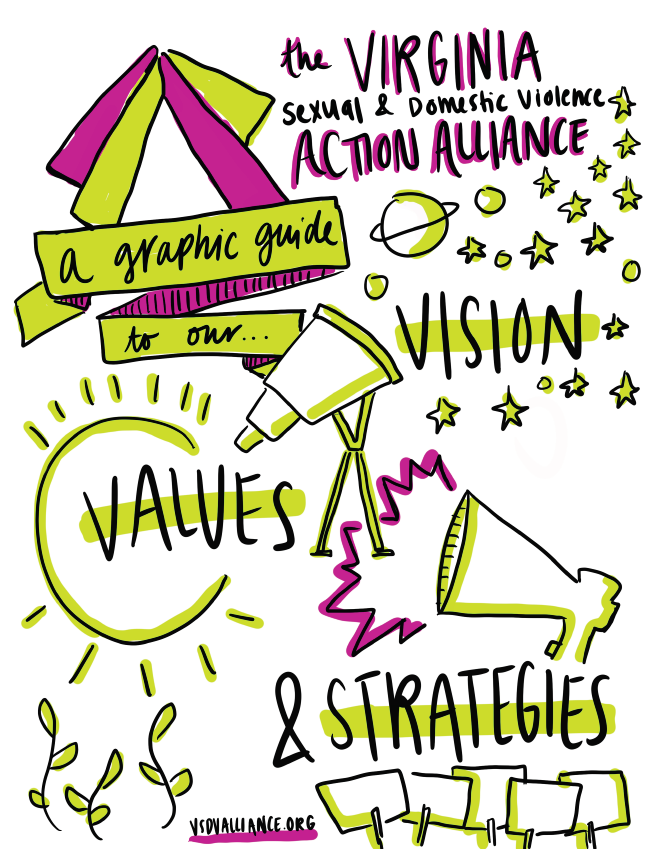
If you’d like to learn more about how the Action Alliance is currently working to build gender justice, racial justice, economic justice, and reproductive justice, download our Vision, Values, and Strategies document.
If there is one thing that the Coronavirus global pandemic has taught is, it is that we are all connected. As white people, it is up to us to honor that sacred responsibility and do our part to bring about change so that all human beings may thrive. White folks living today may not be responsible for building this country’s labyrinth of white supremacy but our silence in the face of white supremacist actions today and moving forward makes us complicit. We are responsible for actively fighting for white supremacy’s destruction. As the ancestors of future generations, we have the resourcefulness and tenacity to build a brighter future for ourselves and for our future descendants.
Kate McCord (she/they) is an Associate Director for the Action Alliance and has been active in integrating a racial justice lens into Virginia’s movement for gender justice for over 20 years.
*The Action Alliance has training curricula on these topics and/or can create “trainings-on-request” for these topics.
Source of featured image: bbc.com
Source of white supremacy iceberg: https://www.facebook.com/rtrlo/photos/a.2323769810997875/3975957802445726/?type=1&theater
White supremacy iceberg image attributions, as listed in its source post: Safehouse Progressive Alliance for Nonviolence (2005). Adapted: Ellen Tuzzolo (2016); Mary Julia Cooksey Cordero (@jewelspewels) (2019); The Conscious Kid (2020).
Read more news